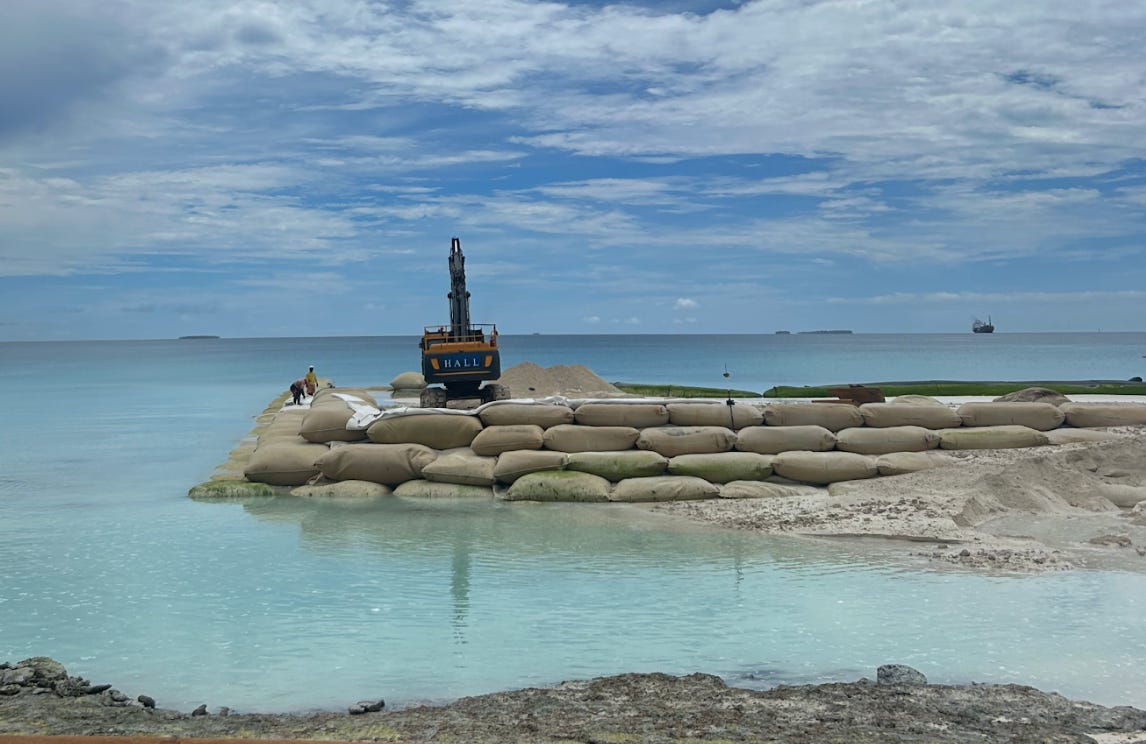
Courtesy of Amanda Coffee
I love learning about unique cultures and spend a lot of time researching how to visit new countries in the most economical way possible. I’ve traveled to 140 countries, the majority as a solo traveler (though my Maltipoo dog Kimchi has accompanied me to eight countries and counting).
My latest adventure was my most logistically challenging yet: I went to Tuvalu, a small South Pacific island nation roughly halfway between Hawaii and Australia, that may be completely underwater by 2050 due to climate change.
Tuvalu is the least-visited country in the world, drawing only about 3,700 travelers a year. With minimal infrastructure, little tourism promotion, and rising sea levels threatening its future, it remains largely off the global travel map.
I’ve been to other less-touristed destinations before — Bhutan, Bangladesh, Algeria — that were complex due to hard-to-get visas, limited infrastructure, or safety concerns. Tuvalu presented a new kind of challenge: It’s incredibly difficult to coordinate flights, and there’s limited travel information online.
I stayed in Tuvalu for three days and two nights. Here’s what I wish I’d known before going.
1. There’s only one way in and out — and you can save on flights by being strategic
An ‘aha’ moment on the Tuvalu trip was when I told my driver I was afraid of missing my flight, and he reminded me, “The plane hasn’t landed, so don’t worry.” Tuvalu is the only country I’ve visited where, each day, there’s one plane in and one plane out, so your Flight Information Display System is literally the sky.
Tuvalu’s only airport on the main island, Funafuti International Airport (FUN), is served exclusively by Fiji Airways. Flights are very limited and currently include from Nadi, Fiji, once a week (Monday) and from Suva, Fiji, three times a week (Tuesday, Thursday, Saturday).
Travelers who aim to visit all 197 countries often plan ahead for their Tuvalu trip, knowing flights are difficult to coordinate. To avoid paying thousands of dollars, my recommendation is to wait for a Fiji Airways annual sale to book a round-trip flight from San Francisco (SFO) to Nadi. I’ve seen fares as low as $700 round-trip, which is a steal, as they’re normally $1,000+.
My flights from Fiji to Tuvalu were another $700 round-trip. It’s advised to add a buffer day in Fiji before connecting to Tuvalu.
2. Hotel bookings can get complicated
When coordinating international travel in the South Pacific, it’s important to account for the International Date Line. I departed San Francisco on a Sunday night and arrived at my destination Tuesday morning — only to realize I had mistakenly booked a hotel for Monday night. The 11.5-hour flight effectively skipped Monday entirely due to the time zone shift, a common oversight when crossing the date line. (Luckily, the hotel was kind enough to accept a late cancel for me.)
Tuvalu has limited hotel rooms and — like the flights — they often sell out. In addition to tourists, construction crews from Australia and other nearby nations visit to support the Tuvalu Coastal Adaptation Project, which pumps sand from the seabed and deposits it along the shoreline to combat rising sea levels. I had to email several hotels before I found a vacancy at NiuEti Lodge.
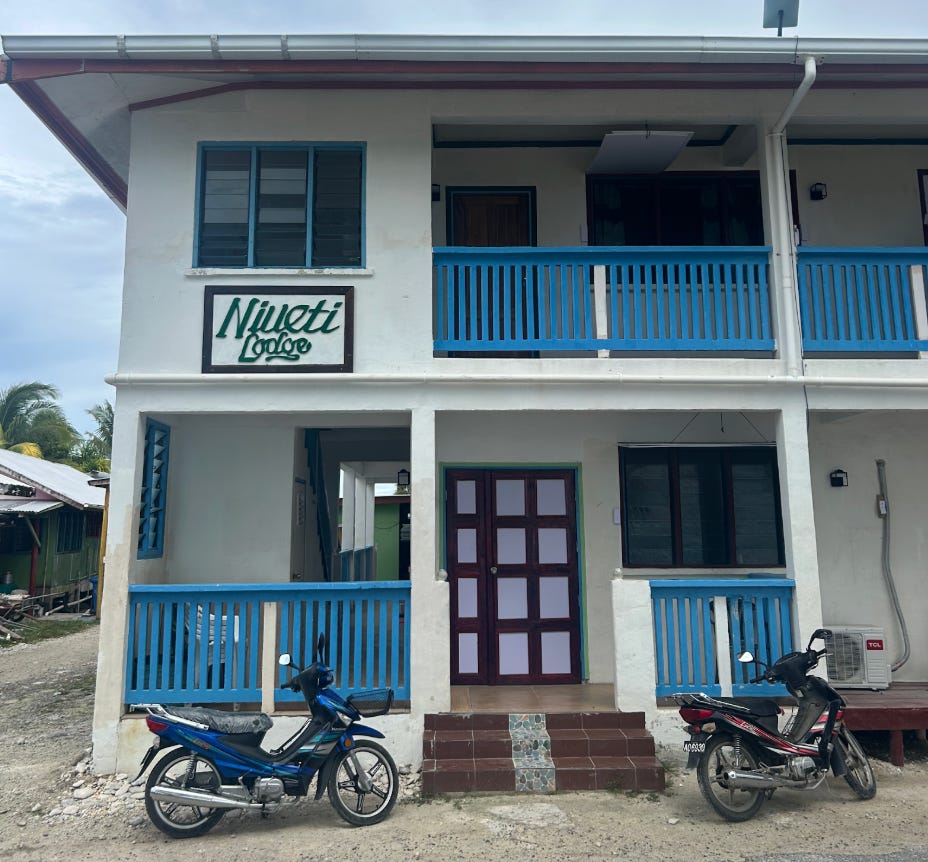
Courtesy of Amanda Coffee
3. Expect a crowd at the runway — but not a taxi
Tuvalu’s airport runway runs straight through the center of the island, doubling as a community space when no flights are scheduled. On off days, locals gather on the airstrip to play volleyball, soccer, and other sports — making the runway as much a playground as a point of entry.
When I landed, I hadn’t realized there were no taxis. I asked how to get a ride, and without hesitation, a local offered to drive me, refusing any payment.
Just as we were about to leave, I spotted a small sign for my hotel and a woman calling my name. It turned out to be a personalized pickup I hadn’t expected — there was no mention of it in my hotel confirmation.
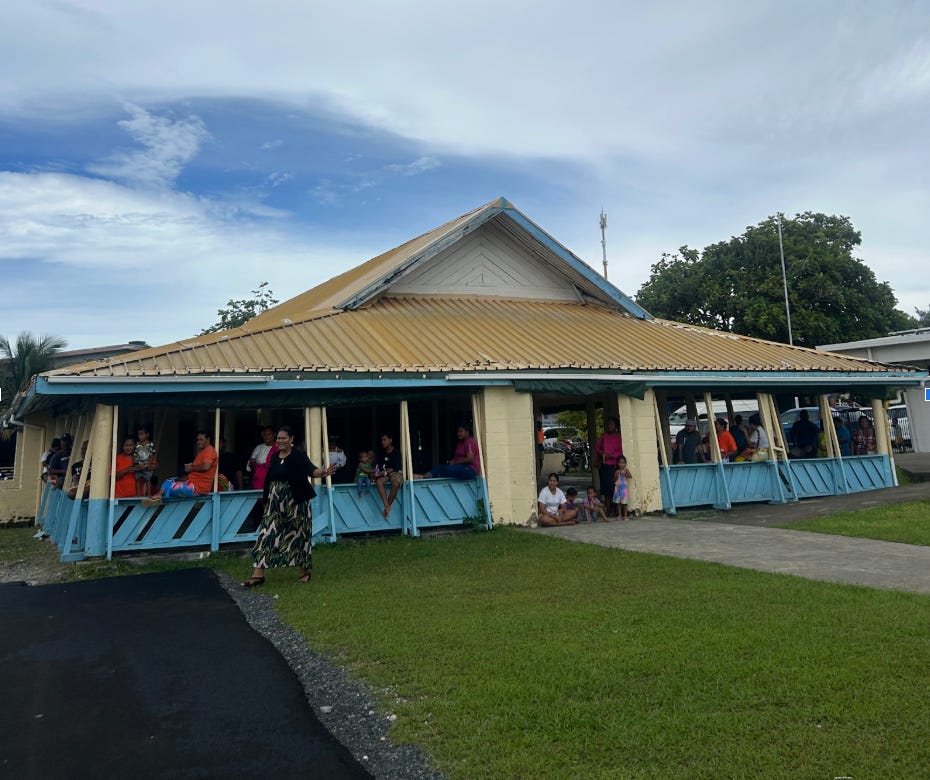
Courtesy of Amanda Coffee
4. Bring cash
Before we hit the road, I asked if there was an ATM. The airport staff excitedly showed me the ATM behind a red velvet curtain — they assumed I wanted to see the country’s first ATM that was being unveiled and becoming operational later that month, not that I needed cash ASAP.
The ATM wasn’t yet working, so I had to visit the bank and Western Union myself money, as I didn’t bring enough cash.
Tuvalu only accepts Australian dollars (AUD), so Fiji dollars from the ATM during your layover won’t work, and credit cards are rarely accepted, even at hotels. It’s best to bring AUD or carry extra USD or EUR to exchange.
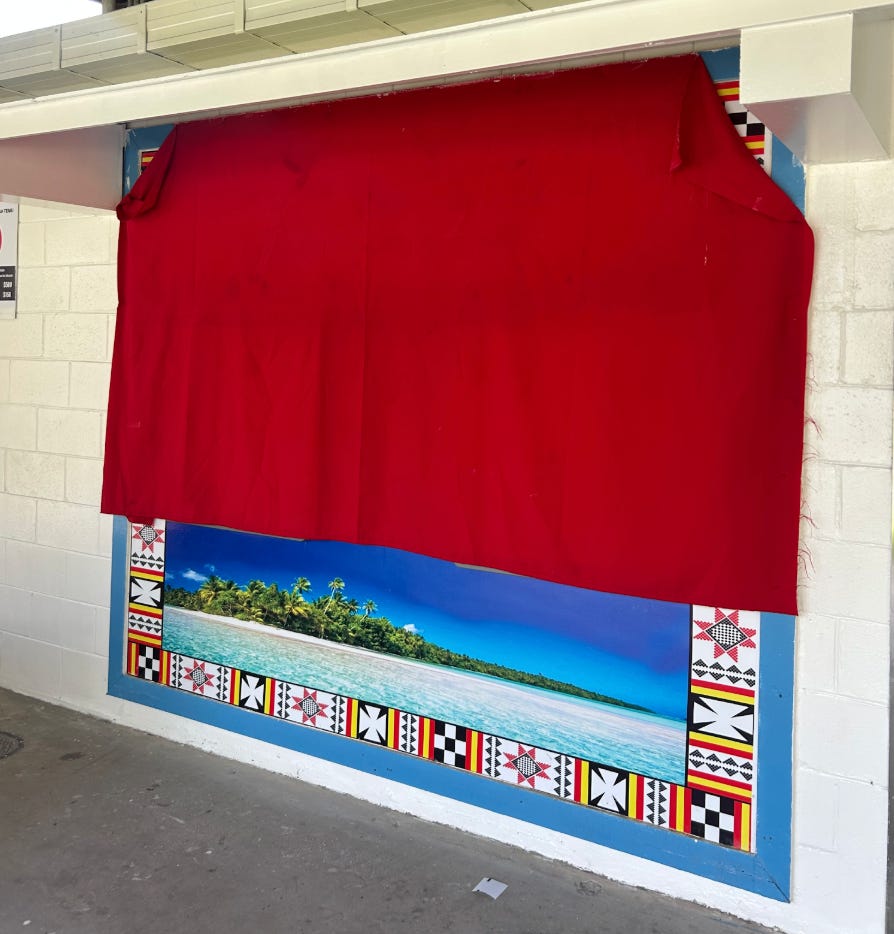
Courtesy of Amanda Coffee
5. Food options are limited
Tuvalu imports nearly all of its food, and prices can be quite high — comparable to New York City — so budget accordingly. I ate most of my meals at 3T’s restaurant, an open-air casual Chinese restaurant by the beach that specializes in fresh fish stir fry for $11 to 15 AUD. It was filled with locals enjoying the food washed down by Fanta Maracujá, a tangy passion fruit soda that’s super popular on the island.
The grocery store was sparsely stocked, with one variety of many staples — Corn Flakes for $6 AUD and Ritz crackers for $6 AUD. The store was sold out of bananas, though I found a small market at the airport with a few bunches of local small bananas.
6. Locals are incredibly welcoming, and it’s fun to explore on foot
Tuvaluans are kind, close-knit, and eager to help. You can walk nearly everywhere; the main island of Funafuti is only 0.93 square miles of land area. Crime is rare.
I always felt safe, although there aren’t many street lamps on the island, so plan ahead for a ride when coming back to your hotel at night. I was offered rides from locals more than once, even if I told them my destination was close by.
Exploring on foot gives you a front row seat to locals fishing, playing with their dogs, and taking a dip in the ocean. Fun facts I learned when exploring the island: Tuvalu owns the .tv country code top-level domain, meaning it sells .tv to companies such as Peacock.tv or Twitch.tv, and one of the church services they offer is held in the water.
A local told me that Simon Kofe, Minister for Transport, Energy, Communications, and Innovation, was on my return flight to Fiji. He’s well known for his advocacy work on climate change, including Tuvalu’s project to make a digital clone of the country in the metaverse to preserve its culture. We took a photo and chatted about Tuvalu’s new passenger and cargo vessel, the Manu Sina.
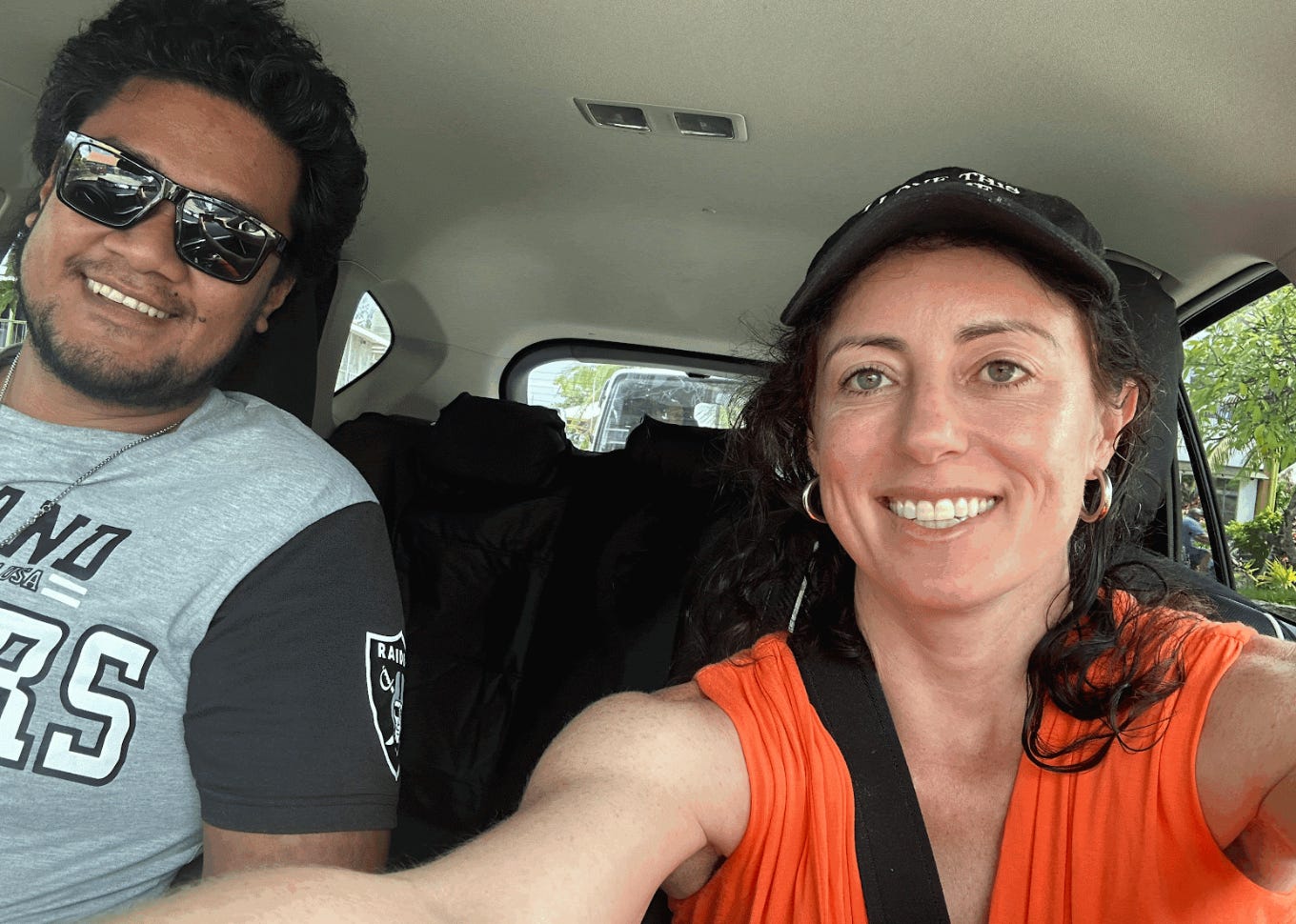
Courtesy of Amanda Coffee
7. Visitors are expected to respect and protect the environment
To help preserve Tuvalu’s environment and culture, visitors are encouraged to follow local practices that respect preservation, wildlife protection, and environmental care. That means recycling and conserving energy — no blasting air conditioning or lighting up LED displays like we do in New York.
Of all the countries I’ve visited — including Mongolia, Madagascar, and Suriname — Tuvalu stands out as one of the most culturally fascinating. If you value sustainable and responsible tourism, it deserves a spot on your list.
The post I traveled to the world’s least-visited country, which may disappear by 2050. Here are 7 things I wish I knew before I went. appeared first on Business Insider.




